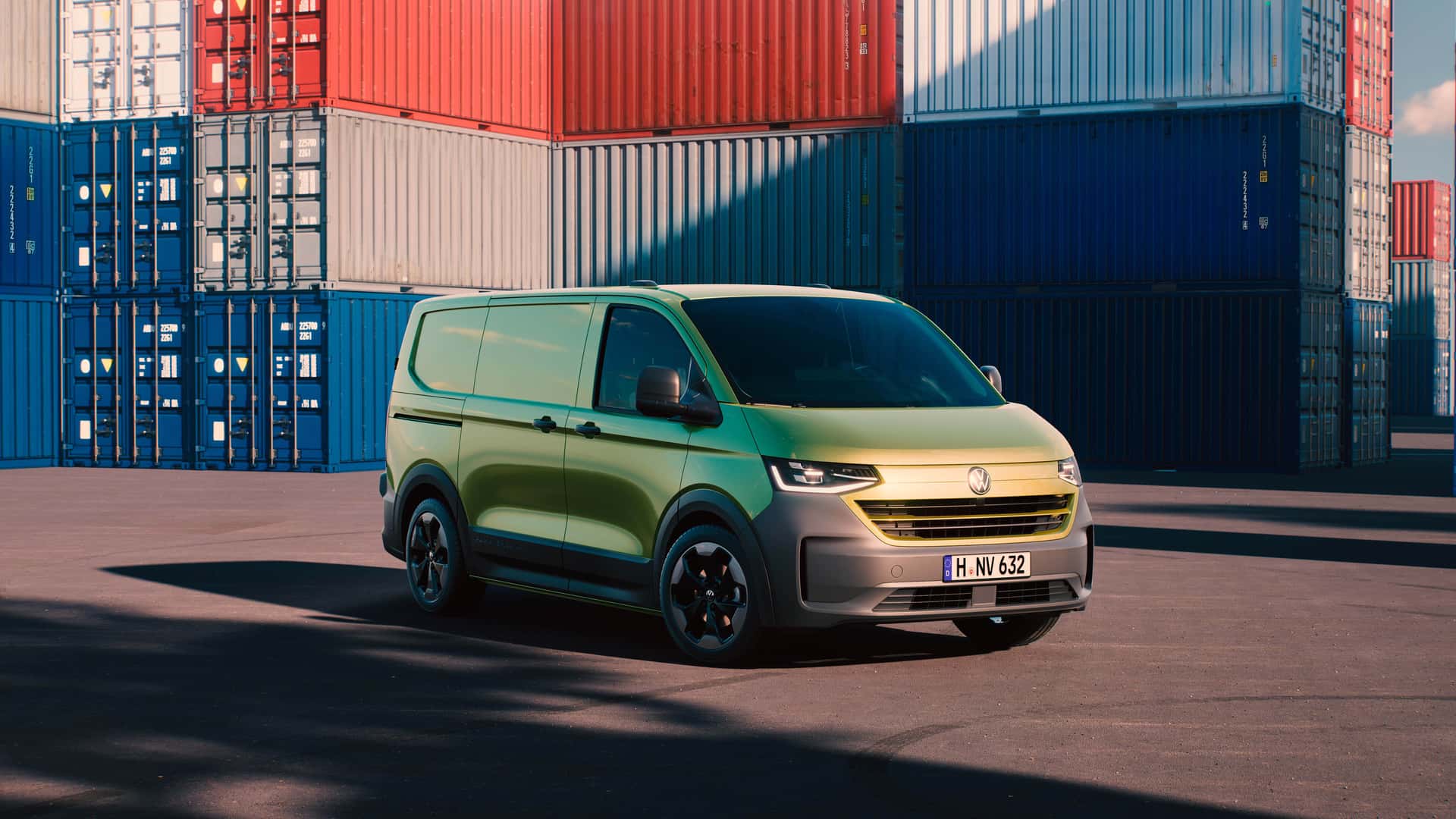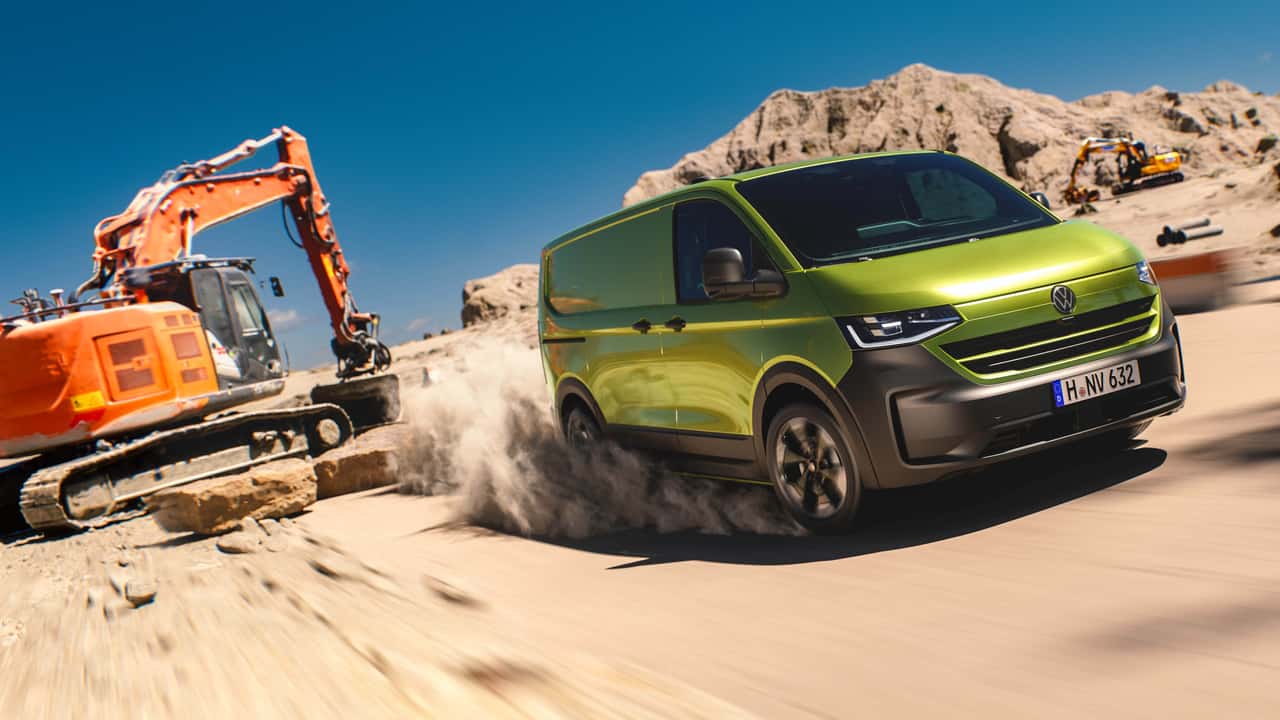You wouldn’t be able to tell just by looking at it, but the new Volkswagen Transporter cargo van (also available as the Caravelle people carrier) shares its underpinnings with the Ford Transit. The Blue Oval also provides powertrains, which include several diesel engines, which remain popular in Europe despite their negative reputation, as well as plug-in hybrid and fully electric variants.
But while the exterior of the Transporter looks nothing like the Transit Custom, the interior is nearly identical, including the 12-inch driver’s display and 13-inch infotainment screen, which runs a reskinned version of the same operating system. The digital instrument cluster graphics are also unique to the Volkswagen, as is the steering wheel.
Get Fully Charged
Three flavors of VW van
Volkswagen today offers the ID Buzz, which is only available as an EV, the Multivan, which doesn’t come as an EV and the new Ford-based Transporter which has diesel, plug-in hybrid and fully electric power.
All three electric versions of the Transporter draw from the same 68-kilowatt-hour battery pack with a usable capacity of 64 kWh that powers the Ford E-Transit Custom. They are all single-motor rear-wheel drive vans that have 134 hp, 215 hp and 282 hp, respectively. Volkswagen hasn’t announced the WLTP range for any of the variants, but the E-Transit Custom can go a claimed 209 miles on one charge.
Volkswagen will also launch an even lower-powered version with a smaller battery pack that will only be fit exclusively for short-haul urban delivery duties.
Gallery: 2024 Volkswagen Transporter








Maximum charging power should be the same as in the E-Transit, which is rated at up to 125 kW. That’s enough to charge from 10 to 80% in 39 minutes, and a 10-minute charge should add 51 miles of extra range. Charging from flat to full from an 11 kW wall box takes just under 7 hours, according to Ford.
The plug-in hybrid variant mates a 2.5-liter naturally-aspirated four-cylinder engine to an electric motor for a combined 229 horsepower sent to the front wheels. With a net battery capacity of 16.5 kWh, that’s good for about 35 miles of town driving or 23 miles of highway driving. These figures are also from the Ford Transit Custom PHEV, but they should be virtually identical for the VW vans.
You will be able to order the new Transporter in Europe in several sizes and body styles, including short- and long-wheelbase configurations with one or two rows of seats or as a long-wheelbase double cab. You can also choose regular or high-roof body styles for most variants, but whichever you choose, they all have the same 1.33-ton (2,932-pound) maximum payload and 2.8-ton (6,173-pound) towing capacity.
The body style will affect the electric variants’ range, especially if it involves more highway driving and towing as much as it allows. This will drastically reduce the range. In Germany, the plug-in hybrid version of the new Transporter starts at just over €55,000 (around $59,340), but pricing for the fully electric variants has yet to be announced. For reference, the Ford E-Transit Custom has a starting price of just under €50,000 (roughly $53,950), and the comparable Volkswagen should be pretty similar.
The automotive industry is abuzz with the recent release of the new VW Transporter, a versatile and efficient vehicle that offers a range of powertrain options to suit the needs of modern drivers. However, what may come as a surprise to many is that the new Transporter is actually a collaboration between Volkswagen and Ford, combining the best of both brands to create a truly innovative vehicle.
The new VW Transporter is available with a range of powertrain options, including a traditional internal combustion engine (ICE), a plug-in hybrid electric vehicle (PHEV), and a fully electric (EV) model. This variety of options allows drivers to choose the powertrain that best suits their driving habits and environmental concerns, making the Transporter a flexible and practical choice for a wide range of drivers.
The ICE model of the Transporter features a reliable and fuel-efficient engine, delivering power and performance without compromising on efficiency. The PHEV model offers a more environmentally friendly option, with the ability to drive on electric power alone for short distances, reducing emissions and fuel consumption. Finally, the EV model of the Transporter is a fully electric vehicle, offering zero emissions and a quiet, smooth driving experience.
One of the key features of the new Transporter is its collaboration between Volkswagen and Ford. By working together, the two automotive giants have been able to combine their expertise and technologies to create a vehicle that is truly cutting-edge and innovative. The collaboration has resulted in a vehicle that offers the best of both brands, combining Volkswagen’s renowned quality and design with Ford’s expertise in powertrain technology.
In conclusion, the new VW Transporter is a testament to the collaboration between Volkswagen and Ford, bringing together the best of both brands to create a versatile and efficient vehicle that meets the needs of modern drivers. With a range of powertrain options to choose from, drivers can find the perfect Transporter to suit their lifestyle and driving habits. The new Transporter is a shining example of what can be achieved when automotive giants come together to create something truly remarkable.

